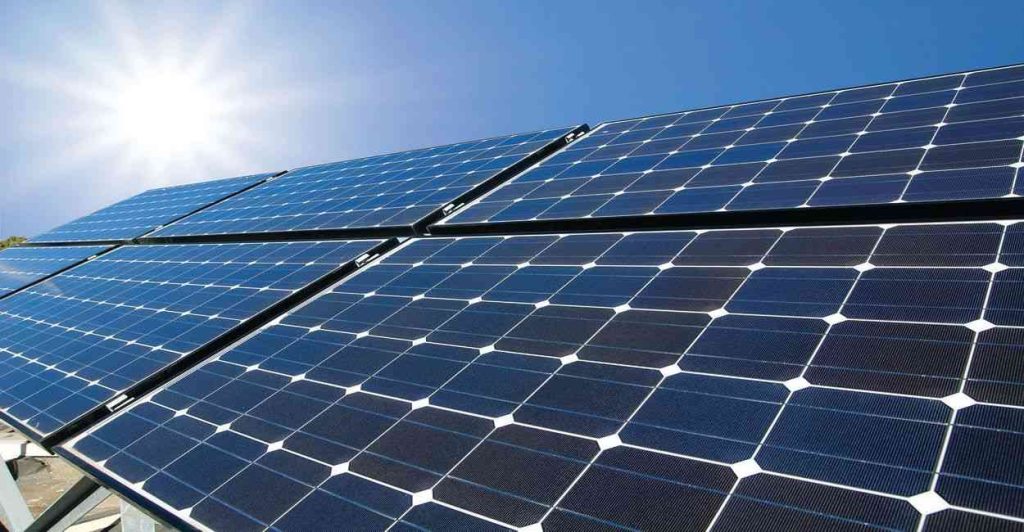
Solar power is fast becoming a vital factor in changing the global energy landscape to a sustainable, renewable, and affordable resource compared to conventional sources of energy such as coal and oil. The adoption of solar power in Sri Lanka is growing rapidly due to abundant sunlight, government incentives, and innovative solutions offered by leading solar companies. This blog takes a closer look at the leading solar companies in Sri Lanka, discusses the different types of solar panels and inverters available, and mentions some technical aspects of the solar panel price in sri lanka and wattage value of solar products in the local market.
The Value of Solar Power Systems as a Sustainable Energy Resource
Solar power is the most readily available renewable resource for humanity. The Earth receives more energy from the sun in one hour than the world consumes in a year. Harnessing this energy through solar panels and systems offers unparalleled benefits.
- Environmental Benefits:
 Solar systems produce electricity without emitting greenhouse gases or other pollutants. This makes them invaluable in the fight against climate change and reduces the environmental devastation caused by the extraction and burning of fossil fuels. By adopting solar systems, many countries stand to significantly reduce their carbon footprints.
Solar systems produce electricity without emitting greenhouse gases or other pollutants. This makes them invaluable in the fight against climate change and reduces the environmental devastation caused by the extraction and burning of fossil fuels. By adopting solar systems, many countries stand to significantly reduce their carbon footprints.
- Economic Benefits:

Solar systems are very costly at their initial investment but provide huge long-term savings. Once installed, they drastically reduce electricity bills and often generate surplus energy that can be sold back to the grid. Most governments and organizations around the world offer incentives, tax credits, and subsidies towards the installation of solar, hence making it quite economically accessible to many.
- Energy Security:
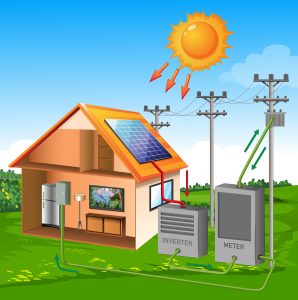
Unlike fossil fuels, which are finite and vulnerable to geopolitical tensions, solar energy is inexhaustible and universally available. Being a tropical country, Sri Lanka receives ample sunlight throughout the year; hence, solar energy is an ideal solution for reducing dependence on imported, expensive fossil fuel, ensuring a stable energy price, and providing a consistent and reliable power supply for generations to come.
- Scalability and Versatility:

Solar systems can be escalated or dwindled for different energy needs. Whether it’s a single solar panel for a small home or a massive solar farm powering entire community, solar technology is flexible enough to suit various applications.
Main Solar Panel Types Used in Sri Lanka
Solar panels are the backbone of any solar power system. In Sri Lanka, the most commonly used types of solar panels are:
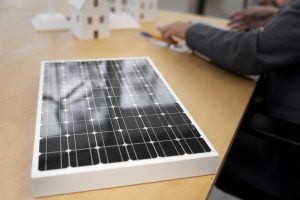
- Composition: Made from a single, continuous crystal structure of silicon, giving them a uniform, black appearance.
- Efficiency: 18–22%, the highest among all types.
- Performance: Known for superior performance, even in low-light conditions.
- Durability: Have a longer lifespan, often up to 25–30 years with minimal degradation.
- Space Requirements: Require less space due to their higher efficiency, making them ideal for areas with limited roof space.
- Technical Specifications:
- Wattage: 300–600 W per panel.
- Temperature Coefficient: ~-0.3% to -0.5%/°C (less efficiency drop in heat compared to other types).
- Dimensions: Typical sizes are 1.7m x 1m for 370 W panels.
- Price Range in Sri Lanka: LKR 65,000–90,000 per panel.
- Best For: Residential rooftops, commercial buildings, and areas with limited space but higher energy needs.
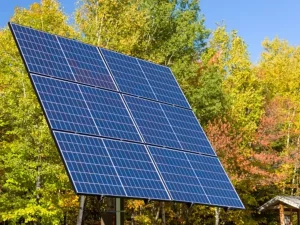
- Composition: Made from multiple silicon crystals melted together, resulting in a blue-speckled appearance.
- Efficiency: 15–17%, slightly lower than monocrystalline panels.
- Performance: Perform well under direct sunlight but are less efficient in low-light conditions compared to monocrystalline panels.
- Durability: Lifespan is similar, around 20–25 years, though they may degrade slightly faster.
- Space Requirements: Require more space for the same energy output due to lower efficiency.
- Technical Specifications:
- Wattage: 250–400 W per panel.
- Temperature Coefficient: ~-0.4% to -0.6%/°C.
- Dimensions: Typical sizes are 1.6m x 1m for 300 W panels.
- Price Range in Sri Lanka: LKR 50,000–70,000 per panel.
- Best For: Cost-conscious users with ample roof or ground space, such as homeowners or small businesses.
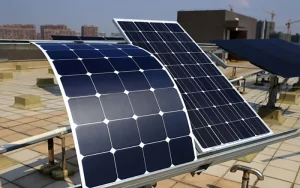
- Composition: Made by depositing thin layers of photovoltaic material (like cadmium telluride or amorphous silicon) onto a substrate like glass or metal.
- Efficiency: 10–12%, significantly lower than crystalline panels.
- Performance: Perform better in high temperatures and low-light conditions.
- Durability: Lifespan is generally shorter, around 10–20 years. They are also more prone to degradation over time.
- Space Requirements: Require significantly more space due to their low efficiency, making them less ideal for roof-mounted systems.
- Technical Specifications:
- Wattage: 150–250 W per panel.
- Temperature Coefficient: ~-0.2% to -0.3%/°C (excellent in hot climates).
- Dimensions: Flexible and lightweight; often smaller than crystalline panels.
- Price Range in Sri Lanka: LKR 40,000–60,000 per panel.
- Best For: Specific applications like portable solar solutions, solar farms, and buildings with unique architectural requirements.
Each type of solar panel has its advantages, allowing users to select the best option based on their energy needs and budget.
Main Solar Inverter Types in Sri Lanka
Inverters play a crucial role in solar power systems by converting the DC electricity generated by solar panels into AC electricity suitable for use in homes or businesses. The most common types of solar inverters in Sri Lanka are:
Features: These inverters are connected to a series (or “string”) of solar panels. They are ideal for small to medium-sized systems and are cost-effective for setups where all panels receive consistent sunlight.
Price Range: LKR 75,000–200,000 (1–5 kW capacity)
Features: Installed on each individual solar panel, microinverters optimize power output at the panel level, ensuring higher overall system efficiency, especially in conditions where shading or dirt affects certain panels.
Price Range: LKR 30,000–60,000 per inverter
Features: Power optimizers are paired with individual solar panels to improve their energy output by mitigating the impact of shading or mismatch issues. Unlike microinverters, power optimizers work in conjunction with a central string inverter to convert DC to AC power.
Price Range: LKR 20,000–40,000 per optimizer 20,000–40,000 per optimizer
Each inverter type serves different needs, allowing users to choose the most efficient option based on their solar panel setup and site conditions.
Leading Solar Companies in Sri Lanka
These have made Sri Lanka very responsive to renewable energy, and several solar companies with reputations for providing advanced technologies and services have emerged. They make valuable contributions toward the green energy transition of the country.
- Heyleys Solar
As part of the Heyleys Group, Heyleys Solar is a pioneer in the Sri Lankan renewable energy sector. They offer tailored solar solutions for residential, commercial, and industrial purposes. Their services include energy audits, system design, installation, and maintenance, ensuring a comprehensive and reliable experience for customers.


- J Lanka Technologies
Renowned for their innovation and expertise, J Lanka Technologies specializes in high-quality solar installations. They provide advanced energy monitoring systems that allow users to track their energy production and consumption in real time. J Lanka is also known for its customer-centric approach, offering guidance at every stage of the solar adoption process.
- Genso Power Technologies – Pvt Ltd
Genso Power focuses on delivering highly efficient and durable solar systems. They emphasize innovation, offering solutions such as hybrid systems that combine solar energy with other renewable sources. Genso’s commitment to sustainability extends to providing energy storage systems, enabling users to store excess power for later use.
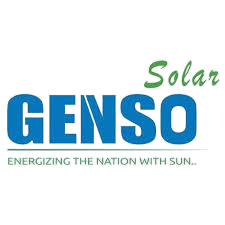

- Three Sinha Solar
This company is celebrated for making solar energy accessible and affordable to Sri Lankan households. Three Sinha Solar offers a range of solutions, from rooftop panels to complete solar systems for large businesses. Their flexible financing options and reliable customer support have earned them widespread trust.
- Abans Solar
A subsidiary of the Abans Group, Abans Solar focuses on eco-friendly and cost-effective energy solutions. They provide end-to-end services, from site evaluation to installation and maintenance. Abans Solar is also involved in community outreach programs to educate the public about the benefits of solar energy.

These companies make a substantial contribution to Sri Lanka’s renewable energy objectives in addition to assisting in lowering energy expenses for both individuals and businesses.
Why Are Solar Power Special Among Other Energies?
Solar power has several unique characteristics that set it apart from other renewable energy sources, such as wind, hydro, and biomass.
Widespread Availability: Solar power can be harnessed almost anywhere around the world. This means simply that wind energy requires specific wind speeds, hydroelectricity depends on flowing water, and solar systems can be installed in both urban and rural areas of even the most remote regions in the world.
Minimal environmental impact: Unlike biomass energy, which may be prepared through deforestation, hydroelectric dams disrupt the ecosystems of rivers; the ecological footprint of solar systems is essentially minimal. They function in complete silence, emitting nothing, and can even be incorporated into preexisting structures-such as roofs-to eliminate the additional need for land altogether.
Energy Independence: Solar systems allow users to create their own electricity by themselves, rather than relying on centralized grids for electricity. With battery storage options, solar users are able to have uninterrupted power in case of outages; this feature is especially valuable in areas with unstable electricity supply.
Efficiency Over Time: Unlike other renewable options, solar systems create the possibility for immediate savings. Once this system is set up, there are no charges for sunlight powering electrical productions thereafter. Advancements in technology and mass production have also considerably reduced the cost of solar panels, bringing them competitive to traditional sources of energy.
Innovations and Future Prospects of Solar Systems
 The solar power industry is evolving rapidly, consistently pushing the boundaries of renewable energy technology. Among the most exciting advancements are bifacial solar panels, which can capture sunlight on both sides, significantly enhancing energy output without requiring additional space. High-capacity solar batteries are another game-changer, providing reliable energy storage solutions that ensure a steady power supply during overcast days or at night. Floating solar farms, installed on water bodies, tackle land scarcity issues while simultaneously reducing water evaporation, showcasing the versatility of solar panels. Transparent solar panels are redefining modern architecture by converting windows and glass surfaces into energy sources, seamlessly blending sustainability with design. Looking to the future, innovations such as solar paint, capable of turning any surface into an energy-generating structure, and solar fabrics for wearable technology, promise to expand the applications of solar power even further. With these advancements and a global commitment to sustainability, solar power continues to grow as an efficient, accessible, and essential solution for achieving a carbon-neutral future.
The solar power industry is evolving rapidly, consistently pushing the boundaries of renewable energy technology. Among the most exciting advancements are bifacial solar panels, which can capture sunlight on both sides, significantly enhancing energy output without requiring additional space. High-capacity solar batteries are another game-changer, providing reliable energy storage solutions that ensure a steady power supply during overcast days or at night. Floating solar farms, installed on water bodies, tackle land scarcity issues while simultaneously reducing water evaporation, showcasing the versatility of solar panels. Transparent solar panels are redefining modern architecture by converting windows and glass surfaces into energy sources, seamlessly blending sustainability with design. Looking to the future, innovations such as solar paint, capable of turning any surface into an energy-generating structure, and solar fabrics for wearable technology, promise to expand the applications of solar power even further. With these advancements and a global commitment to sustainability, solar power continues to grow as an efficient, accessible, and essential solution for achieving a carbon-neutral future.
Conclusion
Solar systems have indeed emerged as a game-changer in the energy scenario worldwide. By tapping into the infinite energy of the sun, they provide an ecologically clean, sustainable, and economically viable alternative to conventional sources of energy. In Sri Lanka, leading solar companies contribute by making access to this technology easier for every individual or enterprise, thereby contributing to the nation’s goals on the environment and energy. While innovation drives further advancements, solar energy will hold a key position in developing a sustainable future. By investing in solar today, we ensure that future generations have a greener and brighter planet.
